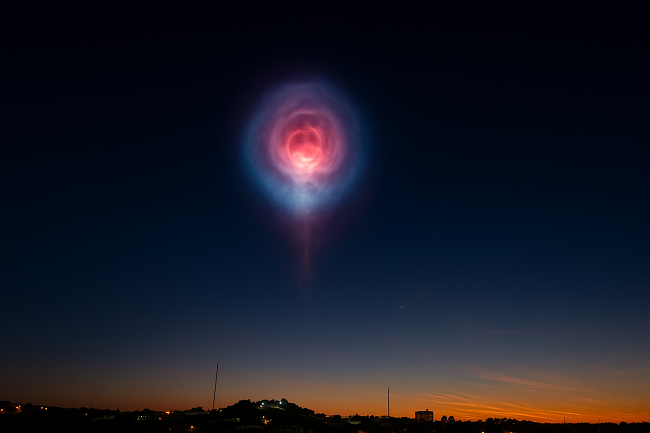
Yesterday (16 June), during the fourth day of war, the Israelis have continued their raids to suppress or destroy Iran's air and missile capabilities and strategic assets. According to official Israeli information, over 50 aircraft were involved in night air strikes on targets – over 100, including 60 in the Tehran area – to consolidate the air superiority achieved over the western quadrant of the country and increase freedom of action over the Iranian capital, but also in other quadrants.
Specifically, air defense systems and related equipment, military infrastructure, and strategic sites were targeted. In particular, the missile complex in Tabriz was hit again—satellite images from the last 36 hours show considerable damage to both missile launchers and the entrances to underground tunnels and infrastructure for moving missiles from these structures (vehicles, cranes)—as well as additional buildings belonging to the Natanz uranium enrichment site, although the IAEA states that the level of radioactivity outside the complex is still normal, which would indicate no damage to the underground infrastructure where the centrifuges are located.
Other military targets hit include a drone base and a logistics support base for the IRGC Aerospace Forces in Ahvaz, the base of the 11th Artillery Group of the Iranian Army Ground Forces in Maragheh, and an unspecified target in Bandar Abbas. It is unclear whether the naval base or a fuel/gas depot was hit. Still on the subject of naval bases, there is no confirmation of the rumored attack on Bandar Anzali, an Iranian Navy facility located on the Caspian Sea. The Imam Hasan base located in Mahidasht, near Kermanshah, was also heavily hit. This facility houses dozens of SHAHED-136 kamikaze UAVs, as well as various types of surveillance and reconnaissance drones. Also in the military installations sector, the Fat'h air base in Karaj, which houses the bulk of the IRGC's rotary-wing fleet, with about 40 helicopters, as well as a pilot training center and several maintenance facilities, was hit. One of the last remaining active radar systems was also hit, specifically a MATLA-UL-FAJR-1 operating in the VHF band, as well as the Alvand air defense site in Khomein, where a KHORDAD medium-range missile system was eliminated. Another noteworthy raid was carried out in Mashad, where the last KC-747 tanker still in operation was destroyed, while another Iranian Air Force Boeing 747-270C was severely damaged. The attack was carried out approximately 2,300 km from Israel (probably with FPV/SPIKE missiles from inside Iran). Mashad is also home to Malakabad Palace, where Khamenei is believed to be hiding...
As mentioned, the bombing focused heavily on Tehran, where the headquarters of the Ministry of Defense and Logistics in the Nobonyad-Pasdaran district and Mehrabad Airport were hit, targeting several Iranian Air Force transport aircraft (plus a couple of F-14 decoys or, in any case, non-operational) and a missile base southwest of the city. An IRGC recreation/summer center in Chamkhaleh, in the province of Gilan (north of the country), used by the Basij militia for training, and the Shahran oil depot in western Tehran were also destroyed, the latter probably hit by GOLDEN HORIZON air-to-ballistic missiles launched by F-15I RA'AM fighter jets. In the same area (Chitgar and Narmak neighborhoods), four other targets were hit: the headquarters of the Iranian Atomic Organization, two affiliated laboratories, and a residential building believed to be used by a high-value individual. The Pasdaran intelligence structure was also heavily hit. In particular, six buildings belonging to the Ministry of Intelligence located in the Sabounchi, Shariati Ghasr, Noavaran Hoveizeh, Sohrevardi, Takhti Square, and Zainabieh neighborhoods were hit by two GBU-39/B SDBs each, killing Commander Gen. Mohammad Kazemi and dozens of senior intelligence officers.
Among the non-military targets, the Malek-Ashtar University in Tehran was hit by several strikes, as were the factories of the Iranian Electronics Industries Corporation in Shiraz, a company that manufactures electronic boards and equipment for Iranian weapons, and a research laboratory of the Iranian Ministry of Defense in Isfahan, involved in the design and development of unidirectional attack drones and petrochemical plants in Ahvaz. In the evening, the main building of IRIB, the Iranian state television and the Islamic regime's propaganda arm, was also hit. According to the Israelis, it is used as a communications center by the Revolutionary Guards, and additional homes of IRGC personnel located in the Shahid Bagheri residential complex in the capital were also hit. In addition to carrying out pre-planned missions, thanks to their local air superiority, Israeli aircraft (F-15, F-16, and F-35) are conducting regular armed patrols over Iran's western airspace, supported by strategic UAVs for the detection and location of opportunistic targets, in particular medium- and short-range mobile anti-aircraft systems, especially TOR-M1, which have proven to be one of the very few ‘positive’ aspects of Tehran's air defense, and ballistic missile transport and launch vehicles (TELs).
According to official statements, the Israeli Air Force destroyed one-third of Iran's ballistic missile launchers (approximately 120-125), 20 of which were eliminated simultaneously shortly before launch. We have evidence of at least 40 launchers destroyed. During the opportunistic attacks, two anti-aircraft systems were eliminated, including a MERSAD-16 in Tehran and another medium-short range system traveling on the road connecting Saveh and Tehran.
As a corollary to the air operations, Mossad teams began striking infrastructure linked to Iran's energy industry (gas and oil) yesterday. Using FPV drones, the Fajr petrochemical plant in South Pars in Kangan, in the province of Bushehr, was hit, causing a massive explosion. Another operation involving some of the approximately 50 teams that Mossad can count on (with a total of 1,000/1,500 Iranian facilitators) is the elimination, using SPIKE missiles and in concert with the Air Force, of a large convoy of TEL vehicles near Asadabad, in the province of Hamedan, headed for launch sites. In another attack in the Hamedan area, FPV drones operated by the aforementioned teams struck a satellite station in Janatabad. Still within the scope of Mossad activities, we understand that during the night between the 14th and 15th, Israeli intelligence made millions of automated phone calls to Iranian civilians—using Qatari, Emirati, and Saudi numbers—urging them to prepare for war by stocking up on water, food, and fuel. This would suggest that the operations will continue for several more days.
For its part, Iran continues to show a reasonable capacity to respond by launching salvos of ballistic missiles and swarms of UAVs (SHAHED-101/136 and KIAN-1ARASH-2), although the latter have caused very little physical damage, with several crashing in Iran, Iraq, and Syria. The IRGC Aerospace Forces used EMAD, QADER, and KHAYBAR SHEKAN medium-range ballistic missiles equipped with supersonic reentry vehicles to strike Haifa and Tel Aviv, with several missiles penetrating the Israeli-US air defense network. Iran launched 65 ballistic missiles in two waves, bringing the total count to 370 carriers. The missiles were launched from Tehran, Zanjan, Shiraz, the Qazvin-Karaj highway, Maahdasht, Kazeroon, Hamedan, Yazd, Salafchegan, Kashan, Shahreza, Tafresh, and near Sharifabad. The targets hit were the Israeli Foreign Ministry building in Jerusalem and several critical infrastructures in the port of Haifa (power plant and refinery), which were heavily damaged or destroyed, as well as an IRON DOME battery located near the city. The Intel chip factory in Kriyat Gat was also hit.
Meanwhile, something is (perhaps) beginning to move on the political front. Iran has reportedly expressed its willingness to end hostilities and resume talks on its nuclear program. It appears that Tehran has conveyed this willingness to Israel and the United States through regional intermediaries, including Cyprus.
+++ UPDATE from 17 June +++
Israeli attacks continued overnight on Tabriz and, above all, on Tehran, where long-range EITAN surveillance drones fly undisturbed in search of potential targets, benefiting from total control of the airspace by the Israeli Air Force over the Iranian capital, now virtually devoid of surface-to-air missile systems and defended by a handful of 23 and 35mm anti-aircraft guns. In one of the raids facilitated by the EITANs on Tehran, and in particular in the Masjid Soleyman district, Ali Shadmani, the newly appointed head of military operations for the Islamic regime in Iran, was killed. A figure close to Khamenei, he had been appointed after the death of his predecessor, Ali Rashid. Iran responded during the night and early morning with the launch of 12/15 ballistic missiles and 30 SHAHED-101/136 drones, most of which were shot down by ARROW 2/3 anti-ballistic systems and AH-64 APACHE helicopters, respectively. However, some missiles and drones hit Tel Aviv and, probably, some Israeli intelligence-related facilities, including the Mossad headquarters in Herzliya (4 missiles). Moreover, one of the SHAHED-101s was intercepted by an APACHE seconds before it hit an ARROW-3 launcher. In addition, an IRON DOME air defense system interceptor malfunctioned immediately after launch and struck the city. This is the second such incident, after an ARROW-2 interceptor crashed in the Nevatim base area yesterday after a similar malfunction.








.png)
